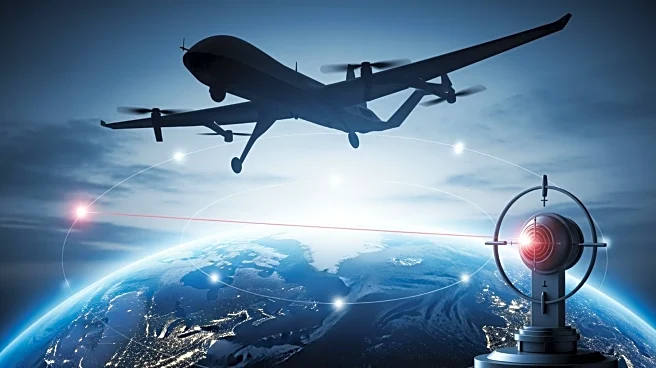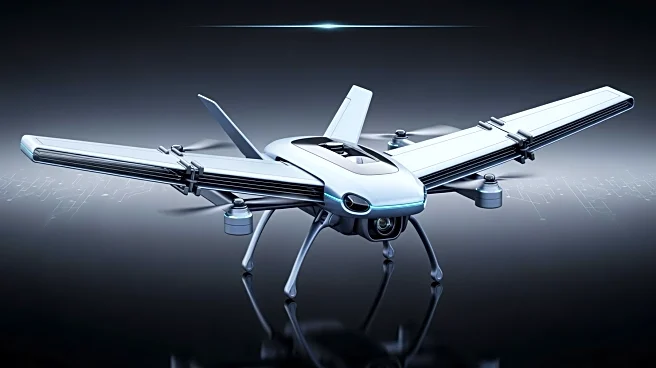What's Happening?
Insitu, a Boeing Company, has introduced significant upgrades to its ScanEagle Long-Endurance Uncrewed Aircraft System (UAS). The enhancements include Proliferated Low Earth Orbit (PLEO) Satellite Communication
(SATCOM) datalinks and laser-targeting capabilities. These advancements aim to bolster the ScanEagle's ability to conduct reliable over-the-horizon Beyond Line of Sight (BLOS) Intelligence, Surveillance, Reconnaissance, and Targeting (ISR-T) missions. The integration of PLEO SATCOM datalinks allows operators to extend mission reach and control the UAS globally, even under challenging conditions. The system is equipped with resilience features such as visual-based navigation and autonomous RF-switching, ensuring operational confidence in dynamic scenarios. Diane Rose, CEO of Insitu, highlighted the ScanEagle's readiness, reliability, and innovation, noting that the new capabilities enable real-time decision-making and operational success for both land and maritime missions.
Why It's Important?
The introduction of PLEO SATCOM and laser targeting capabilities to the ScanEagle UAS represents a significant advancement in unmanned aerial operations. These enhancements provide operators with unparalleled BLOS capabilities, crucial for real-time decision-making in complex ISR-T missions. The ability to control the UAS from any location worldwide enhances strategic flexibility and operational reach, which is vital for military and defense applications. The upgrades also expand the ScanEagle's mission capabilities, making it a more versatile tool for intelligence and surveillance operations. This development is likely to impact the defense industry by setting new standards for UAS capabilities, potentially influencing future procurement and deployment strategies.
What's Next?
With the integration of PLEO SATCOM and laser targeting, the ScanEagle UAS is poised to play a more prominent role in global ISR missions. The enhancements may lead to increased adoption by military and defense agencies seeking advanced unmanned systems for strategic operations. Insitu's continued innovation in UAS technology suggests further developments in autonomous navigation and mission capabilities. Stakeholders in the defense sector may respond by exploring similar upgrades for their unmanned systems to maintain competitive advantage. Additionally, the successful deployment of these technologies could prompt further investment in satellite communication infrastructure to support expanded UAS operations.
Beyond the Headlines
The integration of advanced SATCOM and targeting technologies into the ScanEagle UAS highlights the growing importance of satellite communication in modern warfare. This development underscores the shift towards more autonomous and resilient unmanned systems capable of operating in diverse environments. The ethical implications of enhanced surveillance and targeting capabilities may prompt discussions on the regulation and oversight of UAS operations. As these technologies become more prevalent, there may be increased scrutiny on their use in civilian contexts, raising questions about privacy and data security.











